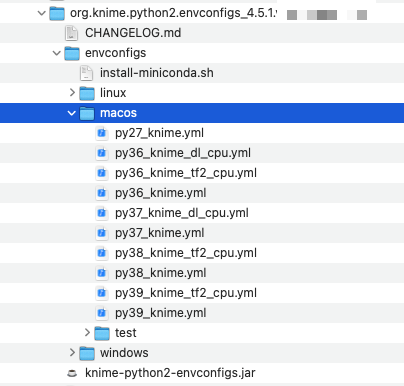under MacOSX the YML / YAML files can be found in a path like this:
/Applications/KNIME 4.5.0.app/Contents/Eclipse/plugins/org.knime.python2.envconfigs_4.5.x.yyyyyyyyyy

The paths might change in further versions.A general article about KNIME, Python and conda environments:
–
Edit: KNIME Snippets (5) — Python Overview | by Markus Lauber | Low Code for Data Science | Medium